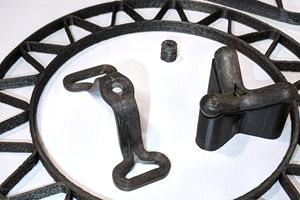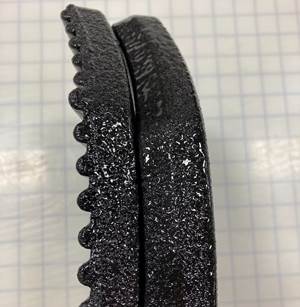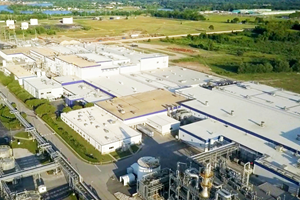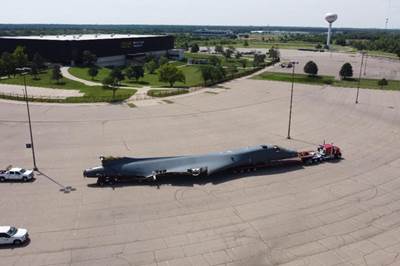Air Force awards $100 million to continue WSU NIAR’s B-1 Digital Engineering program
NIAR’s continued support of adapting the composite warfighter through digital manufacturing will reduce cost, expanding the supply base and increasing aircraft mission readiness.
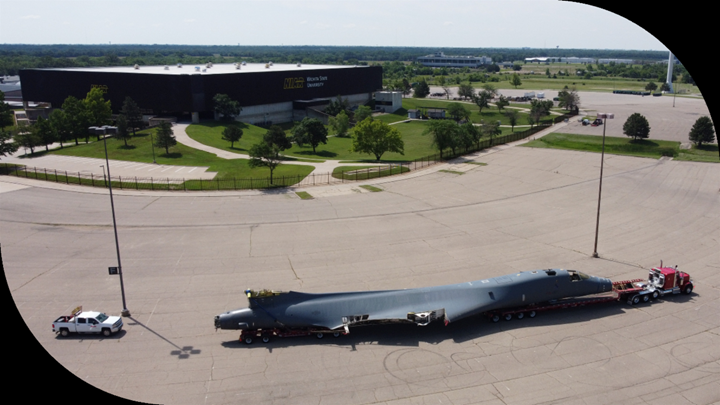
B-1 warfighter. Photo Credit: WSU-NIAR
On March 9, the B-1 System Program Office (SPO), Tinker AFB, OK awarded a six-year, $100 million follow-on contract to Wichita State University’s National Institute for Aviation Research (NIAR, Wichita, Kan., U.S.) to continue the composites-intensive B-1’s Digital Engineering (DE) transformation. The National Center for Manufacturing Sciences (NCMS, Michigan, U.S.) helped form the strategic partnership and created a flexible contract structure, which enables NIAR and the B-1 SPO to adapt requirements in real time to meet critical warfighter needs.
“This project brings the B-1 into the same field as newly designed aircraft and allows digital modeling to predict future areas of concern. This will allow the SPO to proactively develop repairs, reduce the cost and schedule for parts procurement by eliminating the burden of interpreting legacy Air Force [AF] drawings and increase the number of vendors who are capable of producing parts for the B-1 platform,” says Lt Col Joseph Lay, B-1 SPO material leader for structures. “DE will not only help reduce the time it takes to develop repairs but also to install them. We will be able to develop and test repairs well in advance virtually, ensuring first time success and improving aircraft availability.”
While new AF systems are born digitally, the transition to DE for legacy systems is complicated by various factors to include return on investment (ROI) over the platform’s lifecycle, vendor lock with the original equipment manufacturer (OEM) and understanding where to start on a task of this size and complexity. The B-1 is reportedly proving legacy aircraft can find a benefit and has become a trailblazer for other legacy platforms to follow. Creating flexible requirements with a cost ceiling enables the B-1 to execute only those tasks which provide maximum benefit to the warfighter.
Initially, B-1 chose to focus on structures, one of the main issues impacting fleet availability. With successes in Desert Fox, Allied Force, Iraqi Freedom, Enduring Freedom and Inherent Resolve, the B-1 rapidly flew more hours than anticipated, accelerating the need to extend the original certified test life earlier than expected. While the SPO has made significant progress in the arenas of structural life, maintenance and reliability, DE is said will breathe new life into the fleet, rejuvenating the B-1 to fly until the future bomber force is ready. Even in such short time, the SPO has already begun to benefit from DE activities. B-1 models have been delivered to aid in the design and manufacture of support fixtures for use at depot maintenance facilities and the first set of models are being supplied to third-party vendors to provide digital manufacturing data for complex components.
“NIAR is eagerly looking forward to continuing to support the B-1 SPO’s DE transformation by reducing cost, expanding the supply base and increasing aircraft mission readiness,” says Melinda Laubach-Hock, NIAR B-1 program director. “Over the past two years, the B-1 program team has developed smart ways to implement DE for maximum impact on legacy platforms. Flexibility afforded through the NCMS contract has allowed NIAR to adapt to changing priorities of the warfighter.”
The B-1 SPO began its digital transformation in early 2020, creating a structural digital twin of a single wing. Since then, the effort has expanded to include the structure of the entire airframe, the launch of an Integrated Digital Engineering Environment including a product lifecycle management (PLM) tool, model-based systems engineering (MBSE) efforts to create system modeling language (SySML) representations of various mechanical systems, technical order digitalization, the integration of systems and weapons to enhance the structural digital twin, structural and aerodynamic predictive simulation tool development and other DE efforts.
“Wichita State’s partnership with the DOD [Department of Defense] supports sustainment efforts for legacy weapons systems, like the B-1, that will immediately impact the preparedness of the warfighter,” adds Dr. John Tomblin, senior vice president for industry and defense at WSU. “In addition, these programs provide unique educational opportunities for students to work with seasoned professionals, developing a talent pipeline the DOD is capitalizing on, particularly in the emerging field of digital engineering.”
Related Content
High-performance, high-detail continuous 3D-printed carbon fiber parts
Since 2014, Mantis Composites has built its customer and R&D capabilities specifically toward design, printing and postprocessing of highly engineered aerospace and defense parts.
Read MoreUS Air Force selects Integris Composites ballistic body armor
Cratus Wave armor is thin, lightweight and reduces heat stress, providing buoyant personal protection for the 582nd Helicopter Group.
Read MoreToray Composite Materials America to double Torayca T1100 production capacity
The upgrade to the company’s Decatur, Alabama, carbon fiber plant is set to begin April 2023 in order to support rising demand in defense applications.
Read MorePlant tour: Renegade Materials Corp., Miamisburg, Ohio, U.S.
Renegade Materials is known for high-performance prepregs for aerospace applications. Following its acquisition by Teijin in 2019, the company has expanded capacity and R&D efforts on a range of aerospace-targeted materials.
Read MoreRead Next
Air Force, WSU-NIAR to study operational impacts on legacy B-1B bomber fuselage
NIAR team will perform a complete teardown and comprehensive inspection program of the B-1B 86-0101 structure to enable the B-1 Division to more comprehensively manage the fleet of aging bombers.
Read MoreComposites end markets: Energy (2024)
Composites are used widely in oil/gas, wind and other renewable energy applications. Despite market challenges, growth potential and innovation for composites continue.
Read MoreFrom the CW Archives: The tale of the thermoplastic cryotank
In 2006, guest columnist Bob Hartunian related the story of his efforts two decades prior, while at McDonnell Douglas, to develop a thermoplastic composite crytank for hydrogen storage. He learned a lot of lessons.
Read More

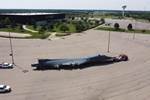
















.jpg;maxWidth=300;quality=90)
